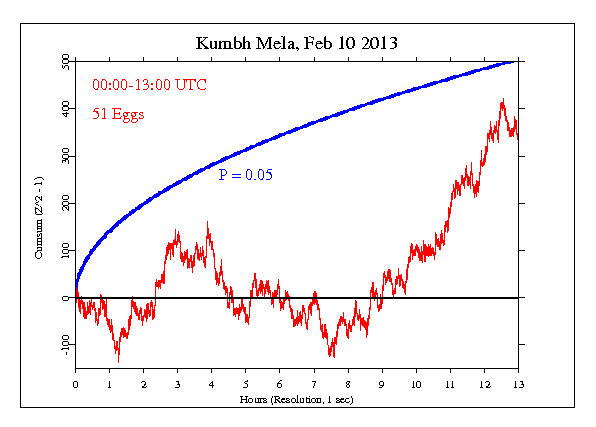|
The current Kumbh Mela started on 14 January 2013 at Allahabad.The day
marked the second and the biggest Shahi Snan (royal bath) of this event,
with 13 akharas taking to the Sangam. 10 Feb 2013 was the biggest
bathing day at the ongoing Maha Kumbh Mela and probably the largest
human gathering on a single day. Over 30 million devotees and ascetics
took holy dip on the occasion of Mauni Amavasya. This is the day we
chose for the GCP event.
The Kumbh Mela is the largest gathering of humanity in the world.
This Kumbh, 100 million pilgrims are expected to make their way to the
river’s edge during the 55-day event, and they will create some 200 tons
of garbage every day. Getting that trash out of the hundreds of camps
and clearings where people sleep and eat during the pilgrimage is not
just a sanitary and logistical necessity, it’s an opportunity. The
central government will spend over $220 million on this year’s Kumbh
Mela, but officials estimate that 15 to 20 times more will be generated
in jobs and businesses supporting the event.
There is perhaps nowhere in the world where people strip down with such
gusto as they do on the banks of the Ganges during the Kumbh Mela. On
Feb. 10, some 30 million pilgrims converged on a narrow strip of
riverfront in Allahabad, India, ditching their sweaters, pants, saris,
skirts, T-shirts, scarves, sandals and whatever other garments stood in
their way between this mortal coil and a little salvation. Some tiptoed
gingerly into the murky water, plugging their noses as they went under;
others ran in with a battle cry. But every pilgrim washed their sins
away in the water on that holy day, when the stars and planets aligned
for a fleeting moment to spill life-giving nectar from the heavens into
the Mother Ganges.
Most of the year, “Kumbh City” is not an inhabited part of Allahabad.
There is no pre-existing water or electricity supply there, or any
system to get rid of human waste. But by the time the festival started
this year in January, Kumbh City was a functioning metropolis with a
population larger than most permanent cities in the world and many small
countries too. The government erects vast tent encampments, some 40,000
toilets, hospitals, markets, emergency services, food stands, supply
shops, offices and hundreds of temples. Making sure all of that stays
clean is quite literally a matter of life and death. “Every minute is
critical,” says Ramesh Srivastava, the additional director in charge of
the mela’s health and sanitation. “If you say, ‘Now it’s O.K.,’
something will happen.”
The GCP event was set, as in the past, for the daylight hours, from
05:30 to 18:30 local time (00.00 - 13:00 UTC). The result is
Chisquare 47141.497 on 46800 df, for p = 0.132 and Z = 1.116.

It is important to keep in mind that we have only a tiny
statistical effect, so that it is always hard to distinguish
signal from noise. This means that every "success" might be
largely driven by chance, and every "null" might include a real
signal overwhelmed by noise. In the long run, a real effect can
be identified only by patiently accumulating replications of
similar analyses.
|